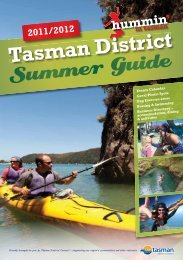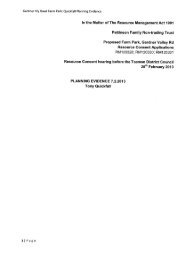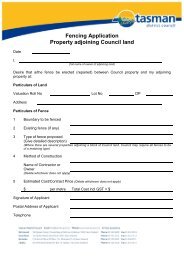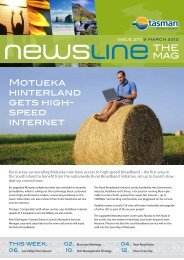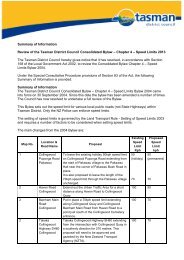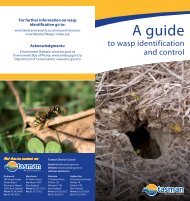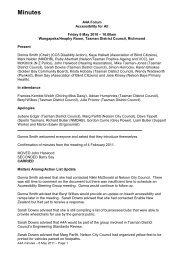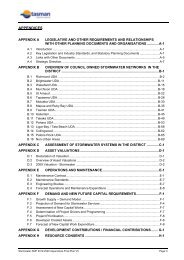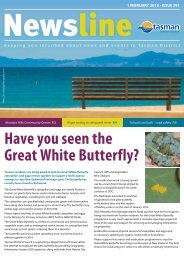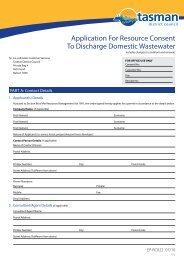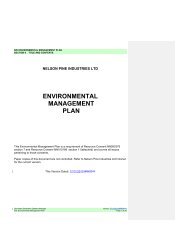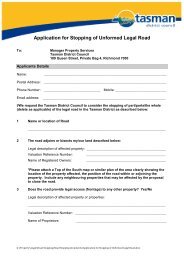Abel Tasman Foreshore Scenic Reserve Draft Management Plan
Abel Tasman Foreshore Scenic Reserve Draft Management Plan
Abel Tasman Foreshore Scenic Reserve Draft Management Plan
You also want an ePaper? Increase the reach of your titles
YUMPU automatically turns print PDFs into web optimized ePapers that Google loves.
4.2.3 Māori sites<br />
Tangata whenua need to be invited to participate in the identification, preservation<br />
and management of any historical, cultural or archaeological sites of significance to<br />
them, in accordance with Conservation General Policy 5(c) (see Appendix 10).<br />
Tangata whenua need to be given the opportunity to care for these sites in traditional<br />
ways, which in some cases means keeping the location of sites confidential. The<br />
Administration Committee intends to ensure that there is an opportunity for a<br />
representative to be present at archaeological excavations or surveys.<br />
Ngā taonga tūturu and other archaeological evidence of Māori settlements have been<br />
found in almost every bay and on many significant headlands in or adjacent to the<br />
reserve. Protection of some of these sites can present a challenge to the<br />
Administration Committee because of the dynamic nature of the coastal<br />
environment. Natural processes, particularly coastal erosion, are a threat to retaining<br />
sites such as urupā/burial ground. If kōiwi/human bones are exposed tangata<br />
whenua should be consulted over the management of the exposed kōiwi. This usually<br />
results in the area being temporarily protected from the public and further erosion,<br />
until the bones can be removed for reburial. If tangata whenua wish to allow the<br />
natural erosion to continue, access to the area may be restricted until that process is<br />
complete and the kōiwi have been removed naturally.<br />
4.2.4 European sites, relics, and protected New Zealand objects<br />
4.2.5 Threats<br />
European relics, archaeological sites, and protected New Zealand objects, which are<br />
mostly found within the adjacent national park, are important to our understanding<br />
of more recent history from the period of European settlement and farming on the<br />
<strong>Abel</strong> <strong>Tasman</strong> coast. They include: buildings; sheep dips; pack tracks; bush tramways<br />
from logging; quarry workings at Tonga Bay, the Tata Islands and Ngaio Island; and<br />
a steam engine used to mill beech bark at Awaroa for the tanning industry. Evidence<br />
of this early European settlement and use, such as old bottles and crockery, may be<br />
exposed in the reserve by coastal erosion.<br />
Both natural processes and human impacts can easily damage archaeological sites<br />
and historical places. These include erosion, earthquakes, fire, decay, neglect, and<br />
increasing pressures of visitor use and facilities. These effects need to be avoided<br />
where possible. In such circumstances, the Administration Committee must have<br />
regard to sections 3(1)(a)(v) and 19(2)(d) of the <strong>Reserve</strong>s Act 1977 and ensure sites<br />
and objects of archaeological and historic interest are preserved as far as possible.<br />
Any new structure or facility development should avoid or minimise impacts on<br />
archaeological sites and historic places (see section 7.2 ‘Other facilities and<br />
structures’).<br />
4.2.6 Interpretation<br />
Interpretation and information can enhance visitor understanding of Māori and<br />
European historical sites and can help the visitors gain an appreciation for the<br />
historical and cultural values preserved in the reserve. Where such information and<br />
interpretation refers to places or stories of spiritual, historical or cultural<br />
significance to Māori it should be developed in consultation with tangata whenua.<br />
4. Historical and cultural heritage 35



